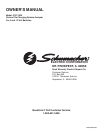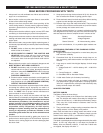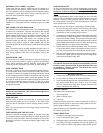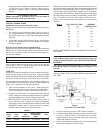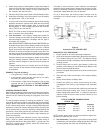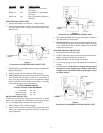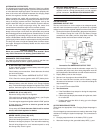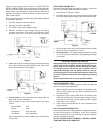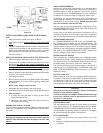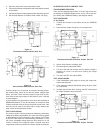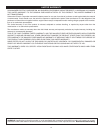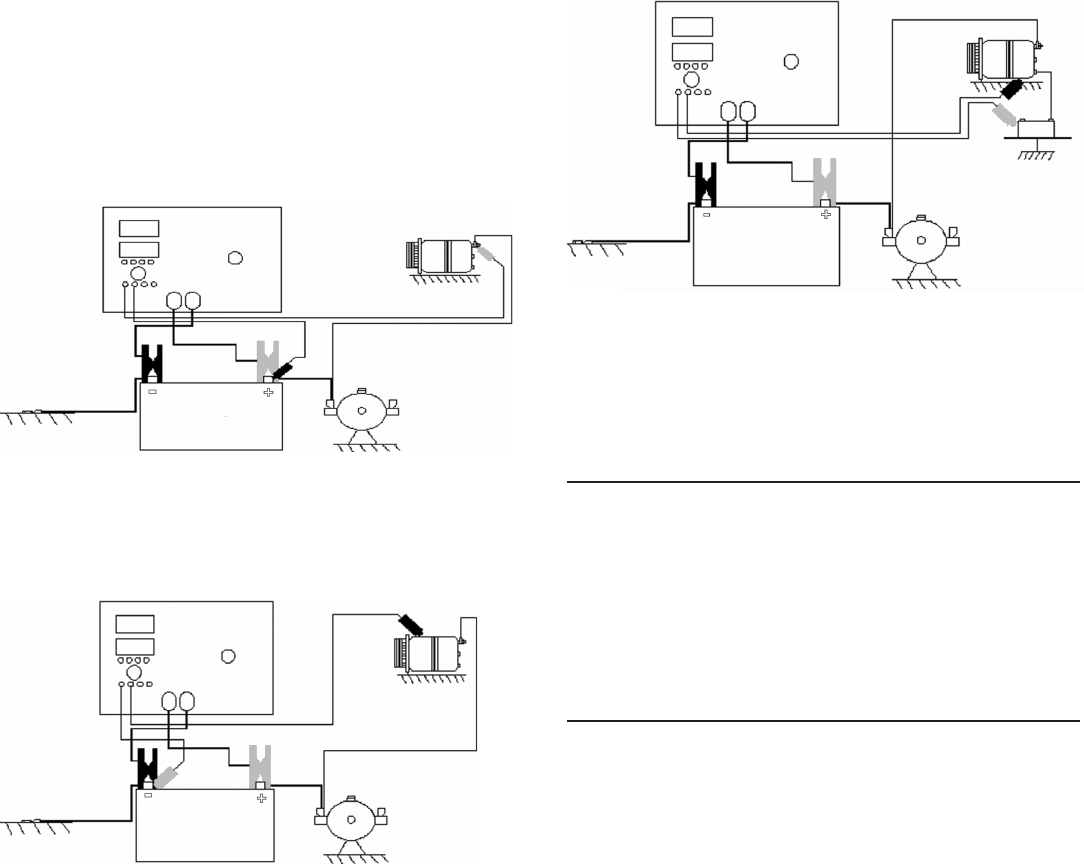
8
Causes of high voltage drops can be from LOOSE OR COR-
RODED CONNECTIONS at the output terminal of the alternator,
the car’s ammeter, battery terminal connection on the starter so-
lenoid, battery cable connections, faulty wiring from alternator to
regulator, to ammeter, to starter solenoid, or between the alter-
nator and the engine.
Hook up the Analyzer as for all of the tests, with the Battery Clamps
on the battery terminals.
1. Set Volts Selector to external ±199.9V.
2. Run engine at about 1500 RPM
3. Turn blower motor and headlights to high.
4. Measure Insulated Circuit voltage drop by connecting
voltmeter from battery POS post to the alternator output
terminal. See Figure 7. Over ±0.5V shows bad connections.
BATTERY
ALTERNATOR
OUTPUT
POS
Figure 7
5. Measure Ground Circuit voltage drop by connecting voltmeter
from battery NEG post to the alternator case. Over ±0.2V
shows bad connections. See Figure 8.
BATTERY
CHASSIS
SOLENOID
RELAY
ALTERNAOR
CASE
NEG
Figure 8
6. Test conclusion : If the circuit resistance voltage drops are
high, repair the bad connections.
Typical ratings for total circuit voltage drops at full output
current:
General Motor 0.7V
Chrysle 0.9V
Ford Motors 0.4V with lamp
Ford Motors 0.8V w/ammeter
If the voltage drops are not the problem, go to the Regulator
Ground Test.
REGULATOR GROUND TEST
Perform this test if the charging voltage is too high or varies more
than 0.2V with steady RPM and electrical loading.
1. Set Voltmeter to External ±199.9V
2. As shown below in Figure 9, connect the External Volt Leads
from the voltage regulator case ground to the alternator case.
ALTERNATOR
CASE
BATTERY
CHASSIS
SOLENOID
RELAY
REGULATOR
CASE
Figure 9
3. Run the engine at idle, but first momentarily boost it to 2000
Rpm to be sure the regulator has “cut in”.
4. Test Conclusion : The voltage reading should be less than
0.1 volt. If not, look for loose bolts, a damaged ground strap
or corrosion.
EXTERNAL REGULATOR CAUTION
Always disconnect the regulator before checking alternator
output with full field jumpers. Always disconnect the con-
nector plug from the regulator before removing the regula-
tor mounting screws. Removing the connection from an
ungrounded regulator with the ignition switch on may de-
stroy the regulator. Be sure to disconnect electric choke wire
from stator terminal of alternator when diagnosing charging
system.
Check electric choke wire for a bad ground condition.
LOAD REQUIREMENT TEST
This test indicates if the charging output is enough to supply the
vehicle accessory load requirement.
1. While running the car, turn on all lights, air conditioning, fan,
wipers, sound system, and any other accessories that will
run continuously.
2. Operate the engine about 2000 RPM. The Battery Volts
readout must be greater than the battery voltage at rest to
show that all the current is being supplied by the charging
output (over 13.0V is good).
3. If low, switch off extra loads one at a time to determine the
output shortage.
FULL FIELDING AMPERAGE TEST
This test disconnects the voltage regulator and applies alternator
full field current directly to the battery, to see if the alternator
windings and diodes are okay. External and internal regulator
units can be tested as follows:
DO NOT GUESS ABOUT TERMINALS. WRONG CONNEC-
TIONS MAY RUIN AN ALTERNATOR.



